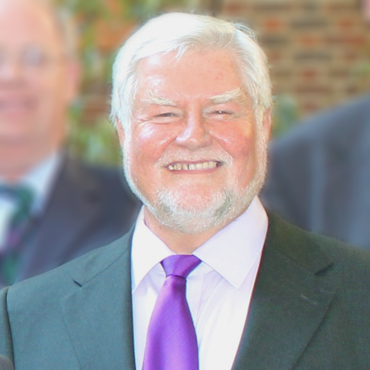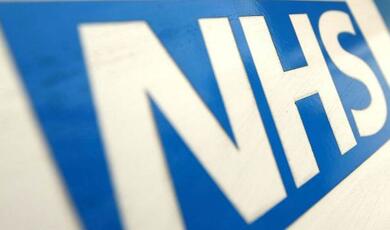8 October 2013
The Black Dog: Causes and Cures for Depression
Professor Glenn Wilson
Winston Churchill famously suffered bouts of depression that he called The Black Dog. He was far from alone. Depression is the commonest psychiatric disorder, with up to 10% of the population said to suffer from it at some point in their lives. This figure is apparently increasing; according to the WHO, depression will be the foremost contributor to the worldwide burden of disease by 2030.
Symptoms include disturbances in mood, energy, sleep, appetite and sex drive. The depressed person is chronically miserable, pessimistic, lacking in energy, feels helpless, useless, guilty without reason and unable to find pleasure in life (anhedonia). The directive to “pull yourself together” is not helpful; many are puzzled by their own condition, seeing no good reason for it.
Unipolar or “major” depression is distinguished from bipolar mood disorder (previous called manic-depressive psychosis), which is characterised by alternating highs and lows. In the “manic” phase there is euphoria, impulsiveness a “flight of ideas” and tendency to grandiosity (sometimes delusional). The “depressive” phase of the mood cycle appears similar to unipolar depression. Other special types of depression include postnatal depression (after giving birth) and seasonal affective disorder (depression associated with long, dark winter nights).
Is depression constitutional, or down to unfortunate life circumstances and experiences? Both seem implicated. Twin studies suggest that major depression is around 40-50% heritable. This could mean that in most cases genetics are about half to blame and the rest down to the environment. Or it could mean that some cases are mostly genetic and others environmental (Levinson & Nichols, 2013).
People with a family history of depression are especially vulnerable. Those with a depressed parent or sibling are 2/3x more at risk. If those family members have recurrent depressive episodes starting early in life the risk increases to 4/5x the average. Bipolar and anxiety disorders in close relatives also increase our risk of depression.
No one gene is responsible for depression but certain genes have been put forward as contributors. Among them is the serotonin transporter 5-HTTLPR (often called SERT). This comes in two versions (long and short), one contributed by each parent. People with one or two short forms (SS or SL)) seem more vulnerable to anxiety and stress, hence more prone to depression/suicide (Caspi et al, 2010). The gene alone does not determine depression – only if the environment is also bad (perhaps a history of child abuse/neglect, broken relationships or unemployment). The comparison between dandelions and orchids has been invoked (Dobbs, 2015). Dandelions thrive in almost any conditions; orchids do well under optimal conditions but otherwise wilt. Sensitive people may be thought of as like orchids.
The short SERT effect has been linked with a particular emotional circuit in the brain involving the amygdala (a threat hub in the midbrain) and the cingulate cortex, which regulates it. Pezawas et al (2005) report that people carrying short SERT genes have reduced gray matter in this circuit compared with those carrying long/long genes. They also show less functional connectivity during fear stimulation in manner suggesting “a weakening of the cingulate’s ability to put the brakes on a runaway amygdala fear response”. This could explain why such individuals are more stress-prone.
What factors in the environment contribute to depression? Any change in life circumstances is apparently stressful, even those we think of as positive (like getting married). Stress is associated with depression but the gene-environment relationship is complex. Kendler et al (1999) studied a large sample of female twins, classifying their stressful life events into those beyond their control and those to which their own behaviour may have contributed. While much of the association between life stress and depression was causal (bad luck), as much as one-third was apparently due to depression-prone individuals gravitating toward high-risk environments (making bad choices).
Occasionally one finds identical twins in which one is depressed and the other not and this is of special interest to researchers. Kendler and Halberstadt (2013) collected autobiographical details from 14 such twin pairs in an attempt to discover the root of the discrepancy. The depressed twin recalled more negative and traumatic events in their past and more setbacks in their love lives. However, the direction of cause and effect was not clear. As noted above, some people create their own bad luck. Discordant stress susceptibility in MZ twins might also arise because of epigenetic factors - early environmental influences on gene expression (Menke et al, 2012).
In the late 1960s, Pennsylvania psychologist Martin Seligman observed that dogs subjected to inescapable shocks failed to take evasive action when escape became possible. It seemed that they had acquired learned helplessness (a perception that events were beyond their control). This became a popular animal model for human depression. However, it was soon realised that, at least in humans, the effect was mediated by causal attributions. People who were pessimistic by nature are more likely to “beat themselves up” (blame themselves for negative outcomes), again highlighting gene-environment interaction.
The premise of cognitive behaviour therapy is that the mood aspect of depression is secondary to pessimistic, self-destructive thought patterns. A relationship breakdown might lead to the conclusion that “I am an unattractive person - nobody will ever love me again”. Loss of a job might prompt the thought that “I am altogether a failure – I will never find another job”. If such beliefs can be challenged by CBT, then mood will hopefully improve (Beck, 2008).
There is actually little evidence that thought patterns precede disordered mood in the origins of depression. Rather, the two components seem to parallel one another during onset and recovery (Lader et al, 1987). Nevertheless, it is likely that effective intervention can begin anywhere in the cycle of maladjustment, drugs and CBT having different start-points.
Certain neurotransmitters are linked to depression. Serotonin is connected particularly with mood, norepinephrine (the brain’s equivalent of adrenalin) determines to alertness and dopamine is associated with pleasure and reward. The circuits which use these neurotransmitters originate in the brain stem and mid-brain regions but radiate widely around the cerebral cortex. Most anti-depressant drugs operate by amplifying the effect of these monoamines. Currently, the most widely used anti-depressants (like Prozac) are selective serotonin re-uptake inhibitors (SSRIs) which prolong the availability of serotonin at the synapses (gaps between adjacent neurons in the brain) thus promoting feelings of contentment.
There is much debate as to the value of antidepressant drugs. They seem to be effective only for severe depression (Kirsch et al, 2008; Fournier et al, 2010). They may also be addictive and have serious side-effects. Seroxat was withdrawn from use with young people in Britain after fears that it might have triggered a number of suicides.
They also have other effects on the brain. SSRIs, as well as lithium, assist the growth of new brain cells in the hippocampus (neurogenesis). It used to be thought that we are born with all the brain cells we will ever have. However, carbon dating of hippocampal cells in deceased persons has shown that some have originated later than others. (Cell dating was made possible by the decline in radioactive carbon-14 in the atmosphere since the nuclear test ban in the 1960s). Depressed people show less new nerve growth, which might explain debilitating symptoms like low mood and memory impairment. A key player in this process is the glucocorticoid receptor, which is involved in the stress response. Antidepressants apparently activate this protein by switching on certain genes that turn immature stem cells into adult brain cells (Anacker et al, 2011).
Treatment effects observed in the brain differ according to the mode of treatment. Paroxetine responders show increased prefrontal activity and decreased activity in the hippocampus and cingulate cortex. CBT improvement is associated with much the reverse - decreased frontal activity and increased hippocampal and cingulate activity. This might be understood as a “top-down” chain of events versus the “bottom-up” process of drugs (Goldapple et al, 2004).
Since medication doesn’t work for all depressed patients (only about 40%) it is useful to seek biomarkers indicating who will benefit. McGrath et al (2013) used PET scans to monitor treatment outcome, comparing 12 weeks treatment of either escitalopram or CBT. Depressed patients showing hyperactivity in the resting anterior insula (an emotional brain area) did better with drugs than talk therapy. For those showing underactivity in the insula the reverse was the case. This might help personalise treatment but less invasive predictors would be better. Gene markers are a possibility; those with s-SERT genes seem to benefit more from CBT than drugs (Lester & Eley, 2013).
If CBT is hard to access it can be delivered via computer (e.g., programmes like Beating the Blues). This is cost-effective (Foroushani et al, 2011) but with severe depression therapist supervision is usually necessary (Newman et al, 2011). In the case of bipolar mood disorder, simple self-monitoring of daily mood fluctuations might help, particularly when feedback is shared with a designated “buddy”. (c.f., Moodscope.com).
Apart from drugs and CBT, certain other approaches to treatment are interesting. Exercise (particularly aerobic) may be as good as drugs and psychotherapy (Rimer et al, 2012; Silveira et al, 2013). It can be used either alone, or as an adjunct to other therapies. There are many reasons why exercise might help: improved health, fitness, self-esteem, social contact, exposure to fresh air and sunshine and distraction from negative thoughts. However, it can be difficult to persuade seriously depressed people to undertake exercise and there is a question concerning its long-term benefits (Krough et al, 2011).
St John’s Wort (hypericum extract) works about as well as drugs with major depression (Linde et al, 2009) and probably in a similar way to SSRIs. Unfortunately, drug companies are little interested because, as a herb, it cannot be patented. Note that being “natural” does not make it safe. It may have fewer side-effects that other drugs but interactions with them are likely and it can increase photosensitivity. Negative findings concerning the efficacy of St John’s wort are sometimes reported but less often in German-speaking countries (where there is a long history of use). Commercial products vary in concentration and not all are effective.
Exposure to bright light and early dawn simulation helps lift depression, especially the seasonal variety (Golden et al, 2005). The blue wavelengths of the spectrum may be critical because these are deficient in artificial light. Light therapy also works about as well as Prozac but its effects are not additive if used in conjunction. Suppression of melatonin, the sleep hormone secreted in darkness, probably mediates the effect.
Pet therapy also works. Nepps et al (2011), for example, found that the company of animals was just as effective in reducing depression as stress management. Pets can provide non-judgemental companionship to people who may otherwise be lacking social support (e.g., bullied children, disabled, elderly and widowed people. Because they are cute and dependent they make excellent surrogate children.
Red wine seems to protect against depression as well as heart disease. Gea et al (2013) followed 5500 Spanish adults (aged 55-80) over a seven year period. Moderate wine consumption (2-7 glasses per week) was associated with a 32% reduction in depression, though heavy drinking increased risk. Non-alcoholic constituents like resveratrol may be responsible but so may associated factors like wealth, diet, life-style and the social context of light drinking.
The facial muscles do not just express emotions, they contribute to their experience. If we make a face appropriate to a particular emotion such as sadness or happiness, we will to some extent induce that feeling in ourselves. Wollmer et al (2012) demonstrated this effect using Botox injections to eliminate the frown lines in patients with major depression who had not responded to the usual drug treatment. Compared with a placebo injection, the treated group showed significant improvement in mood. When frown muscles are frozen it is more difficult to maintain a negative mood. The reverse probably applies when Botox is used to suppress the laugh lines underneath the eyes (Finzi, 2013). Although some believe Botox might be of clinical use, others fear that numbing emotional expression could impair interpersonal relations. When people cannot express empathy they tend to come across rude. They might even be more gullible if unable to raise their eyebrows in surprise.
Transcranial magnetic stimulation has shown some evidence of effectiveness as a treatment for depression but there are so many variables to be investigated that it is still at an experimental stage (Slotema et al, 2010). This is the use of electromagnetic fields to induce a weak current in some target area of the brain, usually frontal. It probably works like an approximation to ECT and its mechanism is just as obscure. It is relatively non-invasive and side-effects are small – occasional headaches, fainting and seizures.
Some think they can get happy with recreational drugs like MDNA (ecstasy). Unfortunately, in the long-term this depletes the serotonin system in the brain, with the likelihood of rebound depression. This may be short-term (“suicide Tuesday”) or long-lasting (Roiser & Sahakian, 2004; Briere et al, 2012). The widespread fashionability of such drugs over recent decades might have contributed to rising levels of depression in the population.
Another drug used for highs/trances in nightclubs is ketamine (Special K, kit-kat or Jet). New research is exploring the possibility that this might be useful as a fast-acting, intravenous anti-depressant (Murrough et al, 2013). Currently, its approved use is only as an anaesthetic (esp. for horses) but some clinicians in the US are offering it “off-label” for depression (Stix, 2013). It appears to work by promoting glutamate transmission and stimulating synaptic connections. It may parallel the benefits of ECT and transcranial stimulation but the dangers are considerable, including hallucinations and kidney damage.
The worst possible outcome for depression is suicide. Most psychiatric conditions carry a heightened risk of suicide (including anorexia, drug abuse, PTSD, anxiety and impulse-control disorders and schizophrenia) but none more clearly so than major depression and bipolar mood disorder. The severity and duration of the depression affects the risk, as does family history, lack of social support and availability of the means (Holma, et al, 2010).
Attempted suicide is about twice as common in women as men but successful is twice as frequent in men. This could mean that some women make attention-seeking gestures, or it may be a result of the more violent modes of suicide adopted by men (e.g., firearms, as opposed to overdosing). Transgender people have a higher risk of suicide and homosexual people (especially lesbians) but this might change with increasing tolerance of alternative life-styles.
Previous attempts at suicide are among the best predictors of subsequent attempts, especially if the mode was macho. Risk is highest immediately after attempted hanging, followed by drowning, jumping from height and firearms (Runeson et al, 2010). The same method tends to be used on the repeat attempt. Nightmares after a suicide bode ill; people still suffering nightmares after two months are 5x more likely to make a repeat attempt, but other sleep disturbances are unrelated (Sjostrom, 2009).
Asking patients about their suicidal plans is little use because they usually conceal their intentions. Therefore, more subtle windows to their thinking have been developed, such as computer tasks. Nock et al (2010) used Stroop and Implicit Association tests to find that selective attention to suicide-related words and the ease of association between the concepts of death and self could predict subsequent suicidal acts. This method yielded higher validity than known risk factors such as severity of depression, previous attempts and patient/clinician predictions.
Why are women more often depressed than men? Feminists have suggested it is because they are “put upon by society” and taught to be helpless. There may be some truth to that, though it would to apply to many other societies more obviously than our own. A genetic tendency to emotional sensitivity is almost certainly involved. Vulnerability to neuroses may be the price paid for the social benefits of women’s compassion and communication skills.
We should resist the temptation to assume that any genes linked to depression are necessarily “faulty”. Short SERT genes seem to have appeared as a mutation quite recently (perhaps only 80K years ago according to Dobbs) but have spread into around 40% of the population. This suggests some adaptational value. Belsky et al (2009) present evidence that while short SERT genes render an individual more susceptible to stress when conditions are bad, they are beneficial in supportive environments by increasing “plasticity”.
If antidepressant drugs only work for severe depression they are almost certainly over-prescribed for mild depression. (1) Talk therapies like CBT (although NICE approved are expensive and not readily available. Drugs are the quick solution for overworked GPs. (2) Celebrities have made depression (especially bipolar disorder) fashionable, like tattoos, so that people, who in the past would have kept a low profile, now think the diagnosis makes them more interesting. (3) Commercial interests have obscured the distinction between ordinary unhappiness and true “melancholia”, which was once a very serious illness. “There is an enormous amount of money to be made from prescriptions of marginally effective medications to large numbers of people; small amounts to be made from prescribing highly effective medications to a small number of people – even though the medications are the same.” (Wright, 2013).
Many sociologists fear that the liberal use of anti-depressants diverts attention from social causes of depression, such as poverty and family breakdown. In the Ebbw Vale area of South Wales, which has high levels of unemployment, around 1 in 6 of the adult population is prescribed antidepressants. Since medication is evidence of “mental ill health” this qualifies the individual for disability benefit (Davies, 2013).
Psychiatry has an appalling record of using brutal and misguided treatments, including lobotomy, insulin shock, coma and electroconvulsive seizures (Davies, 2013). Ernest Hemingway shot himself in 1961 shortly after a course of ECT at the Mayo Clinic. He was quoted by his biographer as saying “it was a brilliant cure but we lost the patient.” Let us hope that our understanding of the causes and cures of depression is moving toward a point where people who are genuinely suffering can be helped both effectively and humanely.
References
Anacker, C. et al (2011) Antidepressants increase human hippocampal neurogenesis by activating the glucocorticoid receptor. Molecular Psychiatry, 16, 738-750.
Beck, A.T. (2008) The evolution of the cognitive model of depression and neurobiological correlates. American Journal of Psychiatry, 165, 969-977.
Belsky, J. et al (2009) Vulnerability genes or plasticity genes? Molecular Psychiatry, 14,746-754.
Briere, F.N. et al (2012) Prospective associations between meth/amphetamine (speed) and MDNA (ecstasy) use and depressive symptoms in secondary school students. Journal of Epidemiology and Community Health, 66, 990-994.
Caspi, A. et al (2010) Genetic sensitivity to the environment. The case of the serotonin transporter gene and its implications for studying complex diseases and traits. American Journal of Psychiatry, 167, 509-527.
Davies, B. Daily Mail, 8/8/13.
Davies, J. (2013) Cracked. London, Icon Books.
Dobbs, D. (2013). The Orchid and the Dandelion. New York, Crown (In preparation).
Finzi, E. (2013) The Face of Emotion: How Botox Affects Our Moods. Palgrave Macmillan, NY.
Foroushani, P.S. et al (2011) Meta-review of the effectiveness of computerised CBT in treating depression. BMC Psychiatry, 11, 131 (online).
Fournier, J.C. et al (2010) Antidepressant drug effects and depression severity: A patient level meta-analysis. JAMA, 303, 47-53.
Gea, A. et al (2013) Alcohol intake, wine consumption and the development of depression: the PREDIMED study. BMC Medicine, 11, 192 (online).
Goldapple, K. et al (2004) Modification of cortical-limbic pathways in major depression. Archives of General Psychiatry, 61, 34-41.
Golden, R.N. et al (2005) The efficacy of light therapy in the treatment of mood disorders: A review and meta-analysis of the evidence. American Journal of Psychiatry, 162, 656-662.
Holma, K.M. et al (2010) Incidence and predictors of suicide attempts in DSM-IV major depressive disorder: A five-year prospective study. American Journal of Psychiatry, 167, 801-808.
Kendler, K.S. & Halberstadt, L.J. (2013) The road not taken: life experiences in monozygotic twin pairs discordant for major depression. Molecular Psychiatry, 18, 975-984.
Kendler, K.S. et al (1999) Causal relationship between stressful life events and the onset of major depression. American Journal of Psychiatry, 156, 837-141.
Kirsch, I. et al (2008) Initial severity and antidepressant benefits: A meta-analysis of data submitted to the food and drug administration. PLOS Medicine (Online).
Krough, J. et al (2011) The effect of exercise in clinically depressed adults: Systematic review and meta-analysis of randomised controlled trials. Journal of Clinical Psychiatry, 72, 529-538.
Lader, M. et al (1987) Patterns of Improvement in Depressed Inpatients. Maudsley Monographs: Oxford Univ. Press.
Lester, K.J. & Eley, T.C. (2013) Therapygenetics: Using genetic markers to predict response to psychological treatment for mood and anxiety disorders. Biology of Mood and Anxiety Disorders, 3 (online).
Levinson, D.F. & Nichols, W.E. (2013) Major depression and genetics. Stanford School of Medicine (online).
McGrath, C.L. et al (2013) Toward a neuroimaging treatment selection biomarker for major depressive disorder. JAMA Psychiatry, 12, 1-9.
Menke. A. et al (2012) Epigenetics, depression and antidepressant treatment. Curr Pharm Des, 18, 5879-5889.
Murrough, J.W. et al (2013) Antidepressant efficacy of ketamine in treatment resistant major depression. A two-site randomised control study. American Journal of Psychiatry, (online).
Nepps, P. et al (2011) Animal-assisted therapy: effects on stress, mood and pain. Journal of Lancaster General Hospital, 6 (Summer, No.2).
Newman, M.G. et al (2011) A review of technology-assisted self-help and minimal contact therapies for anxiety and depression: Is human contact necessary for therapeutic efficacy. Clinical Psychology Review, 31, 89-103.
Nock, M.K. et al (2010) Measuring the suicidal mind: Implicit cognition predicts suicidal behaviour. Psychological Science, 21, 511-517.
Pezawas, L. (2005) 5-HTTLPR polymorphism impacts human cingulate-amygdala interactions: a genetic susceptibility mechanism for depression. Nature Neuroscience, 8,828 (online).
Rimer, J. et al (2012) Exercise for depression. Cochrane Summaries (online).
Roiser, J.P. & Sahakian, B.J. (2004) Relation between ecstasy use and depression: A study controlling for poly-drug use. Psychopharmacology, 173, 411-417.
Runeson, B. et al (2010) Method of suicide attempt as a predictor of subsequent successful suicide: national long-term cohort study. British Medical Journal, 341 (online).
Silveira, H. et al (2013) Physical exercise and clinically depressed patients: A systematic review and meta-analysis. Neuropsychobiology, 67, 61-68.
Slotema, C.W. et al (2010) Should we expand the toolbox of psychiatric treatment methods to include repetitive transcranial magnetic stimulation (rTMS): A meta-analysis of the efficacy of rTMS in psychiatric disorders. Journal of Clinical Psychiatry, 71, 873-884.
Sjostrom, N. (2009) Nightmares increase risk of further suicide attempts. Science Daily, Feb 6.
Stix, G. (2013) From club to clinic: Clinicians push off-label ketamine as rapid depression treatment. Scientific American, Sept 11.
Wollmer, M.A. et al (2012) Facing depression with botulinum toxin: A randomised controlled study. Journal of Psychiatric Research, 46, 574-581.
Wright, J.J. (2013) Personal communication, University of Auckland, NZ, 18/9/13.
© Professor Glenn Wilson 2013


 Login
Login







